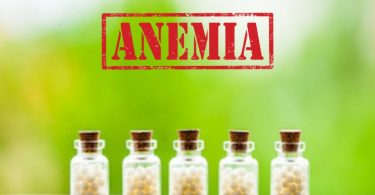APPROCH OF HOMEOPATHIC MOTHER TINCTURE AND DIETARY MANAGEMENT OF GALL STONES/CHOLELITHIASIS
ABSTRACT:
Gallstone or Cholelithiasis is a very common disease worldwide. The prevalence is more in females than males. Although cholecystectomy is considered the gold standard treatment for symptomatic cholelithiasis but cholecystectomy has its own limitations, risks and post-operative complications are more seen. So, an alternative system of medicine, especially Homoeopathy management as well as dietary management plays an important role in treating cholelithiasis or gall stones.
KEY WORDS: Gallstones, Cholelithiasis, Homeopathy, Mother tincture, Remedy, Diet and Regimen.
INTRODUCTION:
Gall stone formation is the most common disorder of the biliary tree and it is unusual for the gall bladder to be diseased in the absence of gall stones.7% of males and 15% of females in developed countries. Age group 18-65years of age. Gall stones are less frequent in India, Far East and Africa.
PATHOPHYSIOLOGY:
1) Physiochemical factors:
Increased hepatic cholesterol secretion and chronic super saturation of bile.
Enhanced cholesterol crystal nucleation in gallbladder bile.
2) Motility defects:
Gallbladder motility defects. Gallbladder stasis. Intestinal motility defects prolonged intestinal transit longer migrating motor cycles. Disrupted motilin release. Gallbladder contains varying quantities of calcium bilirubinate, carbonate, phosphate and palmitate.
TYPES OF GALLSTONES:
Three types of gallstones
1) Cholesterol gallstones:
In this type of gallstones contain an excess of cholesterol morethan70%
Most common type of gallstones.
2) Pigment stones:
Brown crumbly pigment stones are more or less the outcome of bacterial or parasitic biliary infection. More common in chronic haemolytic disease.
Cholesterol content less than 30%.
3) Biliary sludge or mixed stones:
Gelatinous bile that contains numerous microspheroliths of calcium bilirubinate granules and cholesterol crystals as well as glycoproteins-it is important precursor to the formation of gallstones in the majority of patients.
Biliary sludge is frequently formed under normal conditions but the either dissolves or is cleaned by the gallbladder. Only in about 15% of patients does it persist to form cholesterol stones. Fasting, parenteral nutrition and pregnancies are also associated with sludge formation.
CLINICAL FEATURES:
Only 10% of individuals with gallstones develop Clinical evidence of gallstones disease.
1) No symptoms:
Asymptomatic. It is a silent gallstone.
2) Biliary Colic:
Due to contraction of gallbladder against a stone impacted in common bile duct which causes midline or hypochondrial pain associated with vomiting.
Upper abdominal tenderness may be present.
3) Acute Cholecystitis:
Distension pain giving rise to deep, central poorly localised pain.
Peritoneal pain with overlying skin tenderness and muscle rigidity in right hypochodrium referred pain radiating to right scapular region.
Digestive tract pain causing abdominal colic, nausea and flatulence without vomiting. Fever with often chills at onset and tachycardia.
4) Chronic Cholecystitis:
Repeated attacks of biliary colic or present with abdominal distension or epigastric discomfort sometimes relieved by belching nausea triggered by fatty food and dull ache in right hypochondrium,epigastrium and right sub scapular region localised tenderness in right hypochodrium and positive Murphy’s sign.
COMPLICATION:
Empyema of the gallbladder
Porcelain gallbladder.
Choledocholithiasis.
Acute pancreatitis.
Fistulae from gallbladder to duodenum or colon.
Pressure on or inflammation of the common bile duct by gallstones in the cystic duct known as mirizzi’s syndrome.
Gallstones ileus.
Cancer of the gallbladder.
DIAGNOSIS:
1) CBC- leucocytes count increase with increased polymorph.
2) Radiological- Abdominal X-Ray (Plain), USG abdo is IOC (Investigation of choice) and EUS (Endoscopic ultra sound), CT scan, ERCP and MRCP.
MOTHER TINCTURE FOR GALL STONE/CHOLILETHIASIS:
Gall stones and biliary colic has violent pain in hepatic region with bilious manifestation while stones are passing.
1) Carduus Marianus Q
It is basically liver and spleen remedy and haemorrhage because of the affection of liver and spleen. It acts on veins causing varicose veins, ulcers and vascular stasis.Dropsical conditions because of portal affection and congestion of pelvic organs. Abuse of beer. Patient has more debility and fatigue. Amelioration by eating and riding. Stitching, drawing and burning pain in region of hepatic. Liver affection associated with lung affection that is asthma. Nausea and vomiting of green, acid fluid. Gallstones disease with enlarged liver and dropsy of body. Left lobe of liver very sensitive. Fullness and soreness of liver. Constipation is also predominantly present with stool hard, difficult, knotty alternate with diarrhoea.
2) Berberis Vulgaris Q
When urinary symptoms are prominent with tendency to the formation of calculi and lithemia. It affects liver markedly. Patient is mentally and physically tired, not inclined to do anything. Pains rapidly change their locality and character. Symptoms rapidly alternate like thirst alternate with thirstlessness, hunger alternating with loss of appetite. Gurgling and bubbling sensation. Mucous membrane of body becomes dry. Discharges or skin is dirty gray. Catarrh of the gall bladder as well as constipation and yellow complexion of body. Fistula in ano.Complain aggravated by motion, rising from sitting and jarring.
3) Chionanthus Q
It has powerful action on liver. Jaundice occurring every summer. Liver enlarged with uneasy ache and jaundice. Griping at navel.Cholecystitis and gallstones. Jaundice with arrest of menses in females. Weakness in hypogastrium. Stool tarry, clay coloured or undigested food particles. Vomiting with Cold sweat on forehead and back of hand. Tongue heavily coated. Hepatic region render.
4) Dioscorea Q
It is the remedy for many kind of pain and colic. Pains are unbearable, sharp, cutting, twisting, griping, grinding. Ill effect of excessive tea drinking. Amelioration by stretching out, in open air and bending back. Pain suddenly shift to different parts is a character of this remedy. Sharp pains from hepatic region, shooting upward to right nipple. Pain from gallbladder to chest, back and arms. Hurried desire for stool. Haemorrhoids like bunches of grapes or red cherries protrude after stool and pain in anus with darting pains to liver.
5) Cholestrinum Q
It is a useful remedy for obstinate hepatic calculi engorgement with burning pain. Complain aggravate by touch or jar, bending and sudden motion. It’s also
Basic remedy of cancer of the liver and obstinate gall stones. More act on bile and biliary calculi.
6) Pareira Brava Q
Liver affection with genito urinary symptoms. Constant urging for urination. Violent pain in glans penis and down the thighs during micturition. Retention of urine and catarrh of the bladder.Dysuria also present. Urine contains thick, stringy, white mucous or red sand with oedema of lower limb.
7) Thlaspi Bursa Pastoris Q
It is the anti-haemorrhagic and anti-uric acid remedy. Albuminuria during gestation. Chronic neuralgia with liver affection. Gall stone and calculi associated with renal symptoms. Craves buttermilk. Ill effects of suppressed uterine disease.
8) Cactus Grandiflorus Q
Chief action on gall stones with cardiac affection. Primarily affection on Cactus centres on the heart and circulation. Intense burning in abdomen. Feeling of weight in anus with violent palpitation of heart. Engorgement of liver due to heart disease. Sharp and shooting pain through diaphragm and chest. Pain like cord was tied tighter and tighter around attachment of diaphragm, taking his breath away. Vomiting of blood. Nausea in the morning which continues all day. Loss of appetite. Aversion to meat of which he was previously fond.
9) Stigmata Madagus Q
Relive at once the violent pain if given during paroxysm. Powerful homeopathy medicine for liver affection. It has been effectively used in the treatment of organic heart disease and scanty urination. Useful in reducing inflammation of urethra, prostate and urinary system.
DIETARY MANAGEMENT:
Diet and regimen for gall stones/cholelithiasis:
Fat is the principal cause of contraction of the diseased organs and consequent pain. Fat intake reduction 20gm/day is advisable for biliary affected patient. Energy should be deprived chiefly from carbohydrate. Food including cereal in a soft form, cooked rice, chapathi, bread and idli, milk pudding, milk shakes, curds, cooked or pure vegetables, khichdi and porridge.Pulses, beans, meat, fruit, fruit juices, fish and chicken, soft cooked eggs can also be given. These foods are high in energy and protein and also help in regeneration of the liver cells.
CONCLUSION:
Gall stones or cholelithiasis a very common disease condition in population and homoeopathic treatments as well as dietary management are effective in the treatment of gall stone disease. Disappearance of the signs and symptoms within a short span of time along with absence of stone with the help of homeopathic mother tincture and dietary management indicates the positive effect of Homoeopathy in the treatment of gall Stone or cholelithiasis.
REFERENCES:
1) Aspi F Golwalla & Sharukh A Golwalla, Golwalla’s medicine for students, 23rd edition, The National Book Depot, 2011, Page.No.82-83.
2) Brian R Walker (et.al), Davidson’s principles and practice of medicine, 22nd edition, Elsevier publisher, 2018, Page.No.981-983.
3) William boericke,Pocket manual of homoeopathic material medica and repertory,9th edition,San Francisco,B.Jain Publishers Pvt.Ltd.,1927,Page.No.176-177,119-121,196-197,255-256,199-200,497,642,137-139.
4) Dr.S.R.Phatak, Materia medica of homeopathic medicines, 2nd edition revised and enlarged B.Jain publishers Pvt.Ltd, 1999, Page.No.188-190,122-125,214-216,285-287,218,540,144-146.
5) Dr.Yadubir Sinha, Miracles of mother tinctures with therapeutic hints and treatment of diseases, B.Jain publishers Pvt.Ltd, 1981, Page.No.09-10.
6) B.Shrilakshmi, Dietetics, 8th multi colour edition, New age international Pvt.Ltd, 2019, Page No. 395-396.




